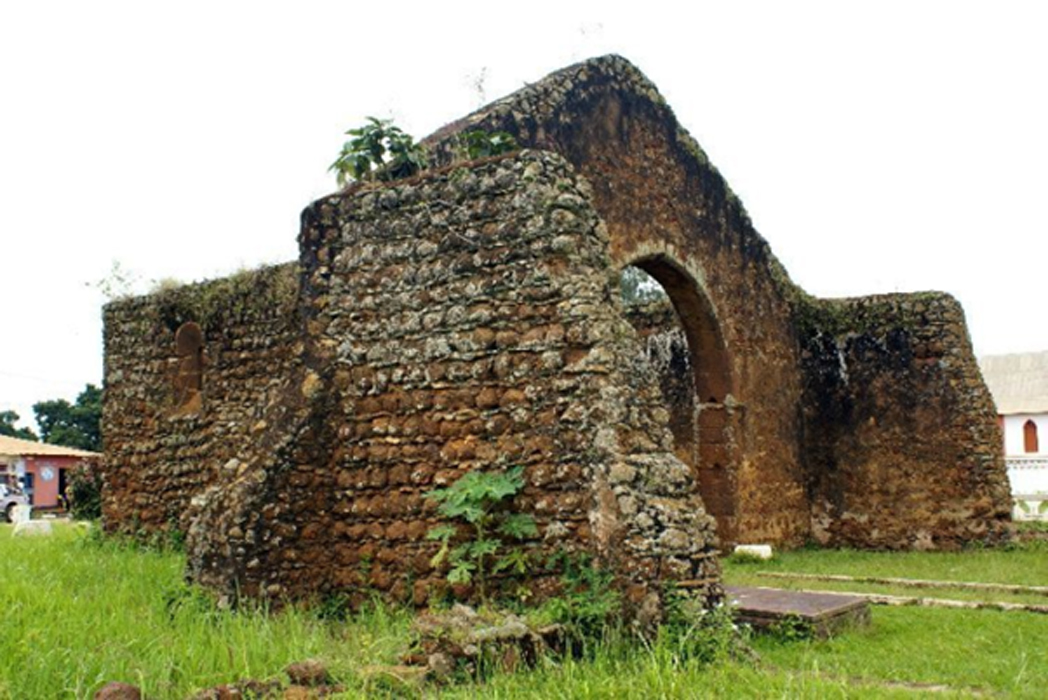Cathedral of the Holy Savior of Congo In Angola Is A Christian Landmark in Sub-Saharan Africa
Angola is a country that is rarely visited and its tourist industry is underdeveloped. This is in part due to the devastation caused by the wars of independence and civil wars that only ended in 2002. But Angola has many historic monuments related to its pre-colonial and colonial past. One of the most important is the former Cathedral of the Holy Saviour of Congo which is significant in the history of Christianity in Africa as it’s the oldest church in Sub-Saharan Africa outside of Ethiopia. At present there are plans by the Angolan government to have the ruins designated as a UNESCO World Heritage site.
The Ruins of the Cathedral of the Holy Saviour of Congo
The Cathedral has been abandoned for centuries, but it is still an impressive monument, although the thatched roof has long since decayed. The vaulted entrance, in particular, is striking. There are believed to be some tombs and crypts of Kongo Kingdom royalty beneath the grounds.
The nave of the former house of worship measures some 12 feet by 4 feet (3.66 m by 1.22 m). The building was made of reddish colored stone and these were once whitewashed. The Cathedral is in a rectangular plan and it was built in an architectural style that was typical of the Portuguese Empire. Despite its status as a cathedral, it is similar to modest churches found in Portugal in the 15th and 16th century. The style of the building could be classed as a blend of Romanesque and Gothic and the surviving windows are typical of Medieval churches. Near the entrance to the Cathedral, a marble monument commemorates Pope John Paul II’s visit to the ruins in 1992.
- Queen Nzinga: A Ruler who Set her People Free
- Ferdinand Magellan: Defying all Odds in a Voyage around the World
- First known colonial building in sub-Saharan Africa, with dark history, revealed to the public

Kulumbimbi, Cathedral of the Holy Saviour of Congo. ( © INPC / Joost De Raeymaeker)
The History of the Cathedral of the Holy Saviour of Congo
The Portuguese first arrived as explorers and then as traders, and settled in the town of M’Banza Kongo. Although deep in the interior of Angola, this town was a unique blend of European and African influences.

Kingdom of Kongo. (Happenstance / CC BY 2.5)
The Cathedral was built in M’Banza Kongo, formerly known as São Salvador do Congo, a town that was part of the mighty Kingdom of Kongo. This kingdom consisted of northern Angola and much of the south of the Democratic Republic of the Congo and was a highly sophisticated society.
In 1485, the reigning monarch, Nzinga a Nkuwu, converted to Christianity and the succeeding rulers of the Kingdom of Kongo were usually Catholics who adopted Portuguese names. The Europeans built a small church in 1491 on the site of the later cathedral in the reign of the local King Joao I.

Kingdom of Kongo conversion to Catholicism. (Kingdom of Kongo and the Atlantic World)
During the reign of King Afonso I, the church was repaired after it was damaged during conflict In the 1530s, but was later burned in the 1590s by invaders from the east. A succeeding Kongo monarch expanded the house of worship while repairing and rebuilding. The Roman Catholic Church, at the request of Alvaro II of the Kingdom of Kongo, raised the church to the status of a cathedral in the 1590s, making it the oldest Catholic Cathedral in sub-Saharan Africa.
When the king of Portugal took control of the house of worship, relations between the Portuguese and the Kingdom of Kongo deteriorated and a series of wars followed. Catholicism, however, continued to grow in the Kingdom and especially in M’Banza Kongo.
- Half A Million Dollar Mask With Otherworldly Origins
- The Braided Rapunzels of Namibia: Every Stage of Life is Reflected in Their Hair
- The Amazing Story of Yasuke: The Forgotten African Samurai

King of Kongo giving audience to Portuguese and his subjects. (Public Domain)
During the third Kongo-Portugal war, the Europeans were able to inflict a devastating defeat on the Africans at the Battle of Mbwila in 1665, killing the king of Kongo. Since there was no successor, a 40-year civil war followed. In 1676, the town of M’Banza Kongo was sacked, the cathedral was destroyed, and it has been abandoned ever since.
Location of Cathedral of the Holy Saviour of Congo
M’Banza Kongo is in Northern Angola and not far from the border with the Democratic Republic of Congo. The city is remote and is not easy to access, although there is plenty of accommodation near the Cathedral of the Holy Saviour of Congo as it is located near the center of the town. Admission to the ruins are free. The city of M’Banza Kongo has many other historical monuments - both from the Kingdom of Kongo and the colonial era - and is well-worth a visit.
Top image: Cathedral of the Holy Saviour of Congo. Source: CC BY SA 3.0
By Ed Whelan
References
Birmingham, D. (1998). Merchants and missionaries in Angola. Lusotopie, 5(5), 345-355. Available at: https://www.persee.fr/doc/luso_1257-0273_1998_num_5_1_1167
Thornton, J. (1984). The development of an African Catholic church in the Kingdom of Kongo, 1491–1750. The Journal of African History, 25(2), 147-167. Available at: https://www.cambridge.org/core/journals/journal-of-african-history/article/development-of-an-african-catholic-church-in-the-kingdom-of-kongo-49117501/2FB5AD22282AF36704DE49E593623693
Thornton, J. K. (1991). African dimensions of the Stono rebellion. The American Historical Review, 1101-1113. Available at: https://www.jstor.org/stable/2164997?seq=1#page_scan_tab_contents



















